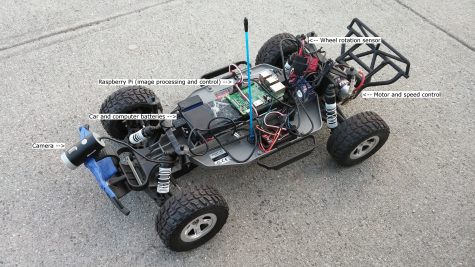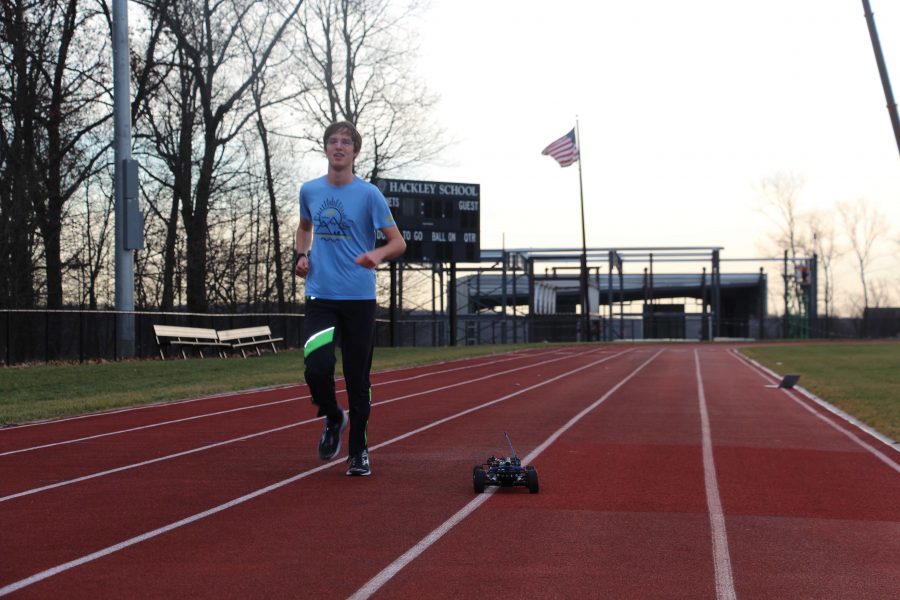Alex Popov’s pacing car links brains and brawn
Credit: Georgia Panitz
Senior Alex Popov tests out his pacing car on the track at Hackley. He built this car to help him train more efficiently by keeping him on a constant pace.
February 10, 2017
Every athlete has goals to improve performance in his or her respective sport, whether it be increasing their serve speed, improving the ability to shoot with his or her left foot, or working on foul shots. Senior Alex Popov’s goal is to improve his times as a member of Hackley’s cross country and track teams. About once or twice a week, cross country coach and physics teacher Seth Karpinski instructs his runners to perform threshold workouts, in which they run relatively close to their race pace for several miles to prepare for competition by improving their anaerobic endurance.
It can, however, often be a struggle for runners to keep a consistent pace during their workouts. Runners either start too quickly and eventually slow down because of fatigue, or they are not aware of the exact pace they are keeping. In an effort to improve his ability to keep a consistent pace during workouts, Alex designed a pace car which travels in front of a runner at a speed set by the user. “I wanted the pace car to serve as a more visual indicator of the correct pace, making it easier to run difficult workouts without having to think about pacing,” said Alex.
While some people use GPS watches and stopwatches during paced runs, GPS watches have difficulty taking into account the corners of the track when determining a runner’s pace, and it is difficult to estimate your pace in the middle of a run using a stopwatch. Alex’s design of the pace car utilizes a Traxxas Slash motorized remote-controlled car. The base of the car, called a chassis, provides a framework for the rest of the equipment and is beneficial due to its large size and ability to carry many heavy components. The car features a secondary battery, a small computer called a Raspberry Pi 3 which uses the Linux operating system, a webcam, and a light sensor which determines the speed of the car by counting wheel rotations.
While building the pace car, Alex made modifications such as the elimination of a remote to control the speed, in favor of using a computer so that he could change the speed control and steering of the car. Alexander uses the software Python, which he describes as “a very versatile and easy-to-learn programming language.” In addition to using Python, Alex also uses Open CV, an online library which contains algorithms used by robotics enthusiasts and companies like Google and Microsoft.
The program for the car, which detects and follows the line on the track, Alex explains, “uses a linear regression to figure out the equation of a line on the track as if that line was plotted on a coordinate grid in front of the car. Then, based on the slope and intercept of the line, the software figures out the appropriate steering angle. In the future, I’m looking into changing this system to one based on neural networks, a far more complex but also more robust way to detect and follow a line.”
While a patent for a car similar to Alex’s already exists, he has never been interested in making profit off of the car. Once he has completed a model which consistently works well and is easy to use, Alex said, “I’m planning to give it to the Hackley Cross Country team in the hope that it continues to make their workouts less tedious and more fun, and maybe even inspires some of my team members to look into building robots of their own.”

The Raspberry Pi 3 is the brain of the pacing car and uses the camera and wheel rotation sensors to follow the lines of the track.

